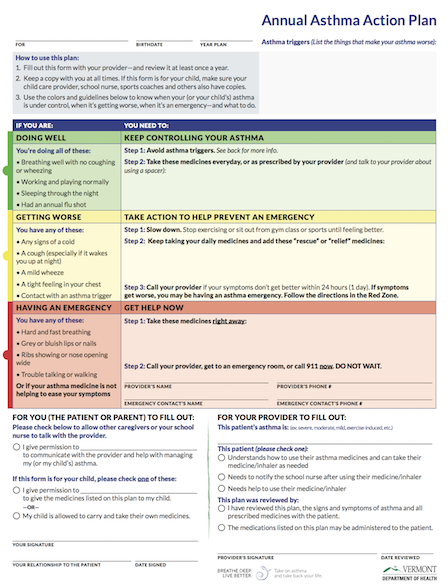Who should have Asthma Action Plan?
Everyone with asthma should have an up-to-date Asthma Action Plan, especially children and teens.
An Asthma Action Plan is more than just a form – it’s an important educational tool that helps people with asthma understand and manage their asthma, all while enjoying life. It also helps a child’s teachers, coaches, school nurses, day-care staff, babysitters, and other caregivers look out for and care for a child with asthma.
What is in an Asthma Action Plan?
The Vermont Asthma Action Plan is a medical form that helps you or your caregivers:
-
Understand what type of asthma you have or your child has
-
Look out for common triggers that can make asthma worse or cause asthma attacks
-
Remember day-to-day instructions on how to manage asthma, and what to do if asthma worsens or if you’re having an asthma attack
-
Know what medicines to take and when to take them
-
Know when to call the doctor, or in serious cases, go to the emergency room
How to use an Asthma Action Plan:
The Asthma Action Plan is filled out by a health care provider and the patient (or caregiver of a child/teen) with asthma.

